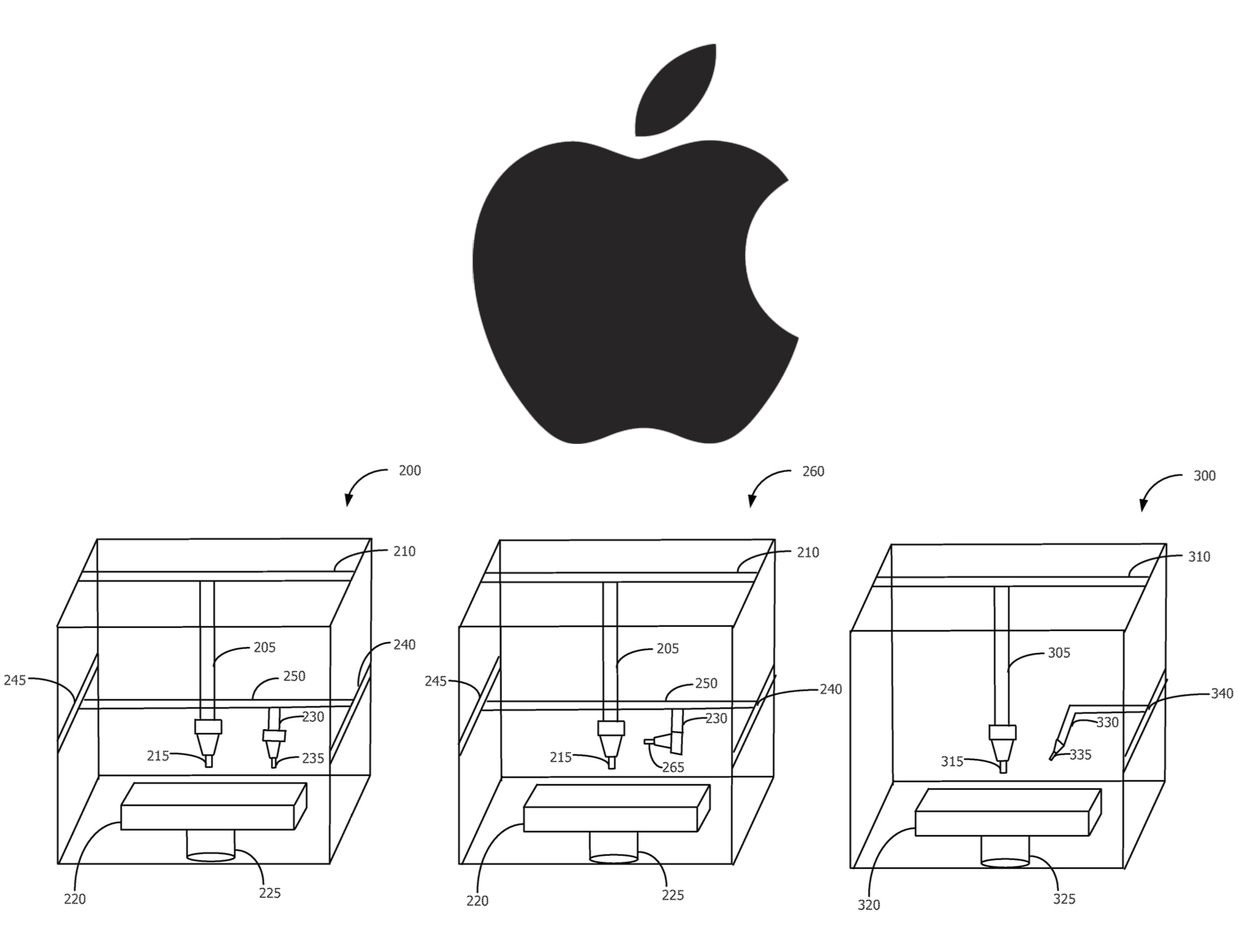
As we described yesterday, Apple last week applied for a US patent for 3D print coloration technology. But what does this mean?
First, we have to say that Apple is a very large company with stupendously huge research and development divisions. These R&D activities often result in patents, many of which never make their way into actual products. There’s a large crowd of observers that specifically watch Apple’s patent stream to derive clues about what might be announced in the future. In the rare cases when a patent actually makes its way into a real product, it’s often several years later.
We see this patent no differently. If anything is to happen, it won’t be for a while. If at all.
Big companies rush to claim patents on practically anything they feel might possibly be useful in the future, even if they have no intention of actually using it, since they will have the rights to use that method and be able to make claims against others who duplicate their invention.
Now then, what of this patent? We have two aspects to examine.
First, is this a practical thing to do? In fact, as we described, the patent is simply for several related methods of applying color to a 3D print. We believe they should be investigated in practical situations, as they may or may not work.
Applying “permanent marker” is something that’s been attempted in other ways, and it has not caught on, due to the imperfect quality of resulting colors. Applying a “liquid to solid” coloration might work, but one can imagine all kinds of geometric support issues in doing this. Worse, the completed and colored 3D print might have much polishing to do, should support material interfere with the colored material. But certainly this should be attempted, as it’s always possible there may be ways to engineer the process around barriers.
Secondly, is this something Apple would actually do? Our thought is a “no”. This is not a 3D printer patent, but is technology one might consider putting into 3D printers. In other words, to use this, Apple would likely have to license existing 3D print processes from others, then add their coloration hardware into the machine design.
Or, and perhaps more likely, Apple might license this process to an existing 3D printer manufacturer to include in their equipment.
The two names on the patent application, in addition to Apple itself, are Geoffrey Stahl, who currently is the Director of Games & Graphics Software, and Howard A. Miller, who apparently is a Senior Engineering Manager in the Printing Engineering area. But these folks seem to be involved in non-solid 3D (graphics) and printing (2D) – not 3D.
Our thought is that this is something they’ve been fiddling with on the side and thought they might as well patent it, just in case. We can’t understand why Apple would be looking at producing 3D printer products anytime soon, unless they’ve secretly discovered some unknown way to vastly simplify the 3D printing processes used by existing 3D printer manufacturers.
Perhaps we’ll see that in another patent application.
Meanwhile, we’ll leave you with two things: yes, this is interesting, and maybe we’ll see 3D Systems or Stratasys license it for investigation.
Via USPTO

